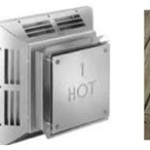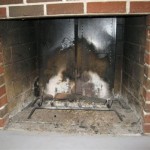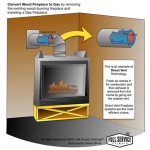Do It Yourself Outdoor Fireplace Plans: A Comprehensive Guide
An outdoor fireplace can transform a backyard into a cozy and inviting space, ideal for relaxation and social gatherings. Building one yourself offers a sense of accomplishment and allows for customization that pre-fabricated options simply cannot match. However, constructing an outdoor fireplace requires careful planning, a solid understanding of building materials, and adherence to safety regulations. This article provides a comprehensive overview of do-it-yourself outdoor fireplace plans, covering essential considerations, design options, and fundamental construction techniques.
Planning and Preparation: The Foundation of Success
Before embarking on the construction process, meticulous planning is crucial. This stage involves several key steps, each designed to ensure a structurally sound and aesthetically pleasing fireplace.
First, local building codes and regulations regarding outdoor fireplaces must be researched and understood. These regulations often dictate permissible locations relative to property lines and structures, as well as specific requirements for chimney height and firebox construction methods. Failure to comply with these regulations can result in costly rework or even legal penalties. Contacting the local building department is highly recommended to obtain comprehensive information and necessary permits.
Second, the desired size and style of the fireplace must be determined. This decision should be based on the available space, the intended use of the fireplace, and personal aesthetic preferences. Consider the overall design of the backyard and choose a style that complements existing landscaping and architectural features. Common styles include traditional brick fireplaces, rustic stone fireplaces, and modern concrete fireplaces. A scaled drawing of the proposed fireplace, including dimensions and materials, is essential for accurate planning and material procurement.
Third, a budget must be established and adhered to. The cost of building an outdoor fireplace can vary significantly depending on the size, style, and materials used. Obtain quotes from multiple suppliers for materials such as brick, stone, concrete blocks, mortar, firebrick, and chimney components. Include contingency funds in the budget to account for unexpected expenses or material price fluctuations. Regularly tracking expenses against the budget helps prevent overspending and ensures the project remains financially viable.
Material Selection and Design Considerations
The choice of materials for an outdoor fireplace significantly impacts its durability, appearance, and overall cost. Each material possesses unique characteristics that must be carefully considered.
Brick is a classic and durable material that offers a traditional aesthetic. It is readily available in various colors and textures, allowing for customization to match different styles. However, brick fireplaces require skilled masonry work to ensure proper bonding and structural integrity. Mortar, the binding agent between bricks, must be carefully mixed and applied to create strong and weather-resistant joints.
Stone provides a more natural and rustic appearance. Available in a wide range of shapes, sizes, and colors, stone can be used to create unique and visually appealing fireplaces. Stone fireplaces often require more complex construction techniques, as individual stones must be carefully selected and arranged to achieve a stable and aesthetically pleasing structure. Mortar plays a crucial role in filling the gaps between stones and providing structural support.
Concrete blocks, often referred to as CMUs (Concrete Masonry Units), offer a more cost-effective and versatile option. They can be easily stacked and mortared together to create a solid and durable foundation for the fireplace. Concrete blocks can be veneered with brick, stone, or stucco to achieve the desired aesthetic. This approach allows for a combination of cost-effectiveness and visual appeal.
Regardless of the primary construction material, firebrick is essential for lining the firebox. Firebrick is designed to withstand the high temperatures generated by burning wood and protects the surrounding structure from heat damage. Firebrick must be installed with specialized high-temperature mortar to ensure its integrity and longevity.
Construction Techniques: Building a Safe and Functional Fireplace
Constructing an outdoor fireplace involves a series of distinct steps, each requiring precision and attention to detail. Safety precautions must be observed throughout the entire process.
The foundation is the critical base of the fireplace. The foundation must be deep enough to extend below the frost line to prevent movement due to freezing and thawing cycles. The foundation typically consists of a concrete slab reinforced with steel rebar. The dimensions of the foundation should be slightly larger than the base of the fireplace to provide adequate support.
The firebox is the chamber where the fire burns. The firebox must be constructed with firebrick and high-temperature mortar. The dimensions of the firebox should be proportionate to the overall size of the fireplace and designed to provide adequate airflow for efficient combustion. A smoke shelf placed above the firebox helps to direct smoke up the chimney.
The chimney is responsible for venting smoke and gases away from the surrounding area. The chimney should be tall enough to create sufficient draft and prevent smoke from blowing back into the yard. The chimney can be constructed from brick, stone, or metal chimney components. A chimney cap should be installed to prevent rain and debris from entering the chimney.
Proper drainage is crucial to prevent water damage. The area around the fireplace should be graded to slope away from the structure. Drainage pipes can be installed to direct water away from the foundation. A waterproof sealant should be applied to the exterior of the fireplace to protect it from moisture penetration.
Safety measures must be consistently implemented during construction. Wear safety glasses, gloves, and a dust mask when working with concrete, mortar, and brick. Ensure proper ventilation when mixing and applying mortar. Use appropriate scaffolding or ladders to reach high areas. Never work alone and always have a helper present in case of an emergency. Regularly inspect tools and equipment to ensure they are in good working order.
:max_bytes(150000):strip_icc()/outdoor-fire-pit-ideas-00ba790bf8f14670a9e78ecdad266497.jpg?strip=all)
31 Diy Fire Pit Ideas And Plans For Your Backyard
:max_bytes(150000):strip_icc()/milkpaint-286c9ee63b604ca1aaecac5233c8a3f3.jpg?strip=all)
10 Free Outdoor Fireplace Construction Plans

How To Build An Outdoor Stacked Stone Fireplace
:max_bytes(150000):strip_icc()/livingstonemasonary-154847150f2a49558b21b5a93d08dfc9.jpg?strip=all)
10 Free Outdoor Fireplace Construction Plans

Fireplace Outdoor Stone Fireplaces Build Backyard
:max_bytes(150000):strip_icc()/chrisjulia-971f3f9eb708447bbd364fc7f4a16280.jpg?strip=all)
10 Free Outdoor Fireplace Construction Plans

Saguaro Diy Outdoor Fireplace Plan

How To Build An Outdoor Fireplace Step By Guide Buildwithroman

How To Build A Fire Pit Lowe S
:max_bytes(150000):strip_icc()/theshed-502c277988c14e118b4ad4f3cfc54a90.jpg?strip=all)
10 Free Outdoor Fireplace Construction Plans
Related Posts








